Related Research Articles
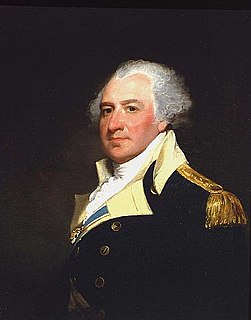
Thomas Mifflin was an American merchant, soldier, and politician from Philadelphia, Pennsylvania. He served in a variety of roles during and after the American Revolution, several of which qualify him to be counted among the Founding Fathers. He was the first governor of Pennsylvania, serving from 1790 to 1799; he was also the last president of Pennsylvania, succeeding Benjamin Franklin and serving from 1788 to 1790.

Downingtown is a borough in Chester County, Pennsylvania, 33 miles (53 km) west of Philadelphia. As of the 2010 census it had a population of 7,666. Downingtown was settled by English and European colonists in the early 18th century and has a number of historic buildings and structures.
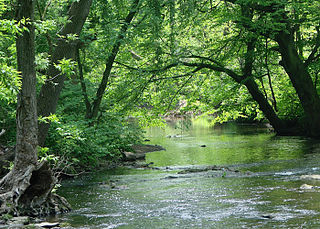
Haverford Township is a home rule municipality township in Delaware County, Pennsylvania, United States. Haverford is named after the town of Haverfordwest in Wales, United Kingdom. It is a commuting suburb located due west of Philadelphia and is officially known as the Township of Haverford. Despite being under a home rule charter since 1977, it continues to operate under a Board of Commissioners divided into wards, as do "First Class" townships that are still under the Pennsylvania Township Code. Haverford Township was founded in 1682 and incorporated in 1911.

Lower Merion Township is a township in Montgomery County, Pennsylvania and part of the Philadelphia Main Line. The name Merion originates with the county of Merioneth in north Wales. Merioneth is an English-language transcription of the Welsh Meirionnydd.

Benjamin Chew was a fifth-generation American, a Quaker-born legal scholar, a prominent and successful Philadelphia lawyer, head of the Pennsylvania Judiciary System under both Colony and Commonwealth, and Chief Justice of the Supreme Court of the Province of Pennsylvania. Chew was well known for his precision and brevity in making legal arguments as well as his excellent memory, judgment, and knowledge of statutory law. His primary allegiance was to the supremacy of law and constitution.
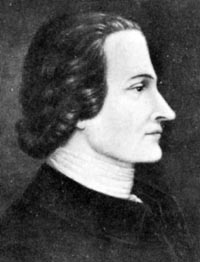
George Taylor was an American ironmaster and politician who was a Founding Father of the United States and a signer of the United States Declaration of Independence as a representative of Pennsylvania. Today, his former home, the George Taylor House in Catasauqua, Lehigh County, Pennsylvania, is a National Historic Landmark.

Thomas Fitzsimons was an Irish-American merchant and statesman of Philadelphia. He represented Pennsylvania in the Continental Congress, the Constitutional Convention, and the U.S. Congress. He was a signatory of the Constitution of the United States and is considered one of the Founding Fathers of the United States. He was also a slave owner.

Elizabeth Griscom Ross, also known by her second and third married names, Ashburn and Claypoole, was an American upholsterer who was credited by her relatives in 1870 with making the first official U.S. flag, accordingly known as the Betsy Ross flag. Though most historians dismiss the story, Ross family tradition holds that General George Washington, commander-in-chief of the Continental Army and two members of a congressional committee—Robert Morris and George Ross—visited Mrs. Ross in 1776. Mrs. Ross convinced George Washington to change the shape of the stars in a sketch of a flag he showed her from six-pointed to five-pointed by demonstrating that it was easier and speedier to cut the latter. However, there is no archival evidence or other recorded verbal tradition to substantiate this story of the first U.S. flag. It appears that the story first surfaced in the writings of her grandson in the 1870s, with no mention or documentation in earlier decades.
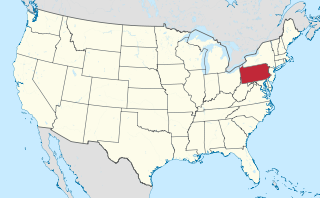
The Philadelphia Main Line, known simply as the Main Line, is an informally delineated historical and social region of suburban Philadelphia, Pennsylvania. Lying along the former Pennsylvania Railroad's once prestigious Main Line, it runs northwest from Center City Philadelphia parallel to Lancaster Avenue.

John Dickinson, a Founding Father of the United States, was a solicitor and politician from Philadelphia, Pennsylvania, and Wilmington, Delaware, known as the "Penman of the Revolution" for his twelve Letters from a Farmer in Pennsylvania, published individually in 1767 and 1768. As a member of the First Continental Congress, where he was a signee to the Continental Association, Dickinson drafted most of the 1774 Petition to the King, and then, as a member of the Second Continental Congress, wrote the 1775 Olive Branch Petition. When these two attempts to negotiate with King George III of Great Britain failed, Dickinson reworked Thomas Jefferson's language and wrote the final draft of the 1775 Declaration of the Causes and Necessity of Taking Up Arms. When Congress then decided to seek independence from Great Britain, Dickinson served on the committee that wrote the Model Treaty and then wrote the first draft of the 1776–1777 Articles of Confederation and Perpetual Union. Dickinson later served as president of the 1786 Annapolis Convention, which called for the Constitutional Convention of 1787. Dickinson attended the convention as a delegate from Delaware and signed the United States Constitution.

Haverford is an affluent, unincorporated community located in both Haverford Township in Delaware County, Pennsylvania, US, and Lower Merion Township in Montgomery County, about 3 miles (4.8 km) west of Philadelphia. The Pennsylvania Railroad (PRR) opened Haverford Station in 1880 on their Main Line west out of Broad Street Station in Philadelphia. Haverford sits at milepost 9.17.

Bala Cynwyd is a community in Lower Merion Township, Pennsylvania, US. It is located on the Main Line in southeastern Pennsylvania, bordering the western edge of Philadelphia at US Route 1. It was originally two separate towns, Bala and Cynwyd, but is commonly treated as a single community. This came about when a single US Post Office served both towns using ZIP code 19004. The community was long known as hyphenated Bala-Cynwyd. Bala and Cynwyd are currently served by separate stations on SEPTA's Cynwyd Line of Regional Rail.
Penn Valley is an unincorporated community located within Lower Merion Township, Pennsylvania. Penn Valley residents share a zip code with Merion, Narberth, or Wynnewood because the town does not have its own post office. However, Penn Valley is a distinct community whose civic association demarcates the town's boundaries with iconic signs featuring William Penn and a farmhouse in blue or red on white, dating from the town's incorporation in 1930.

As the location of many major battles, New Jersey was pivotal in the American Revolution and the ultimate victory of the American colonists. This important role earned it the title of Crossroads of the American Revolution.

Pennsylvania was the site of key events and places related to the American Revolution. The state, and especially the city of Philadelphia, played a critical role in the American Revolution.

Hope Lodge is a historic building located at 553 South Bethlehem Pike in Fort Washington, Pennsylvania, in the United States. This mansion has been described as "one of the finest examples of Georgian Colonial architecture in this part of the country. It was used by Continental troops during the 1777 Philadelphia Campaign during the American Revolution.
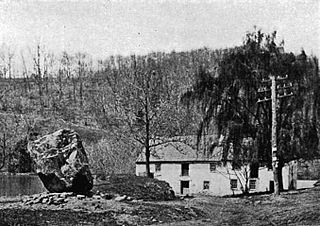
Gulph Mills is an unincorporated community in Upper Merion Township, Montgomery County, Pennsylvania. It is served by the Upper Merion Area School District. There is a station on the Norristown High Speed Line.

The Speaker's House is a museum located in Trappe, in Montgomery County, Pennsylvania that preserves the home of Frederick Muhlenberg, the First and Third Speaker of the United States House of Representatives. The house was built in 1763, bought by Muhlenberg in 1781, and occupied by his family until 1791.
Thomas Willcox was a colonial-era paper mill owner in Concord Township, Delaware County, Pennsylvania, United States. The Ivy Mills supplied paper used for currency for the Continental and United States governments as well as many South American governments. Willcox was a friend of Benjamin Franklin, made printing paper for him and received the first orders for paper used in colonial American currency from him.

Frederick Leaser (1738–1810) was a Pennsylvanian German farmer, patriot and soldier from Lynn Township in Lehigh County, Pennsylvania. He is best known for transporting the Liberty Bell to the Zion Reformed Church in Allentown, Pennsylvania during the American Revolutionary War.
References
- ↑ Develin, Dora Harvey. Historic Lower Merion and Blockley